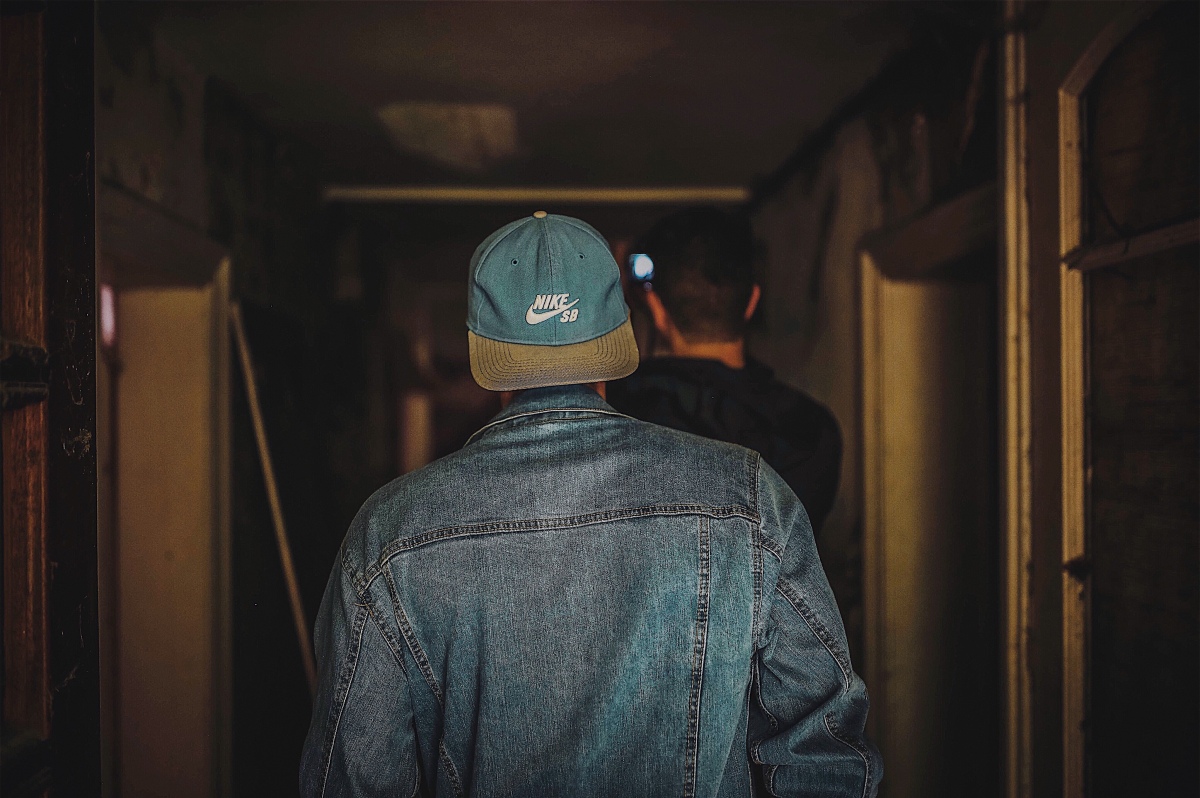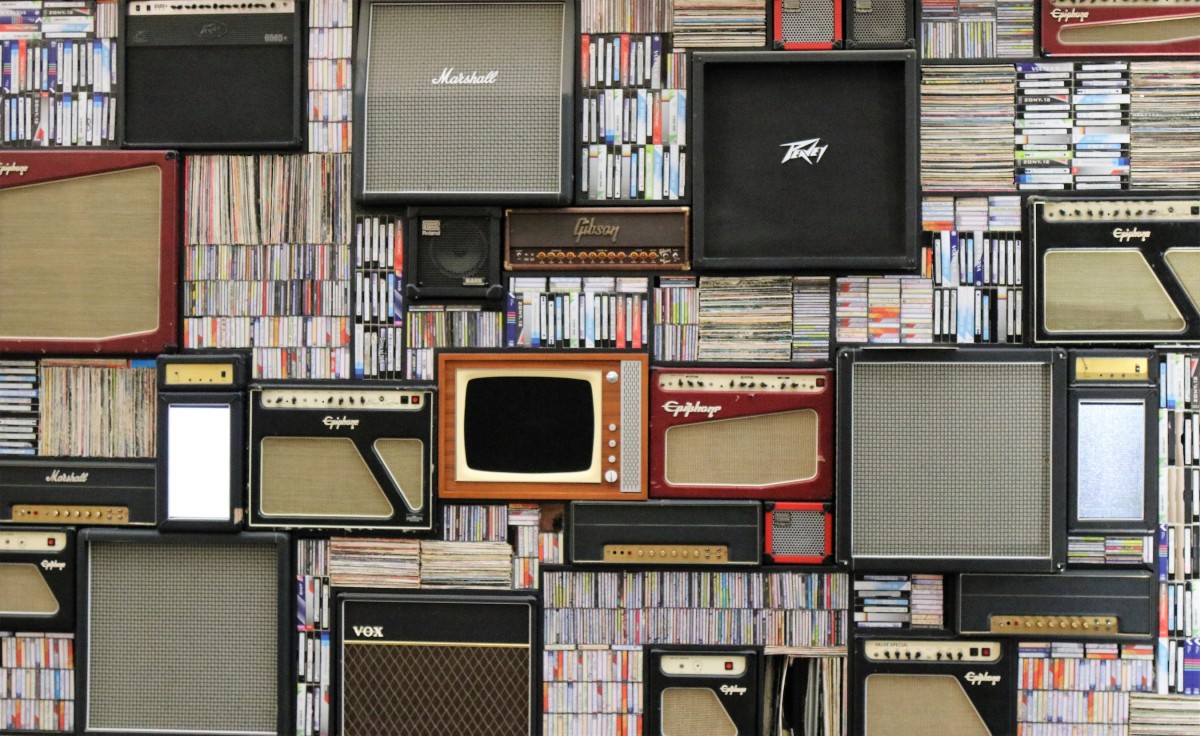In his book, Who Owns the Future, Jaron Lanier discusses the idea of real-time income and wealth generation. He presents the topics through the lens of sharing songs in the music industry, but the principle applies to today’s sharing economy.


In his book, Who Owns the Future, Jaron Lanier discusses the idea of real-time income and wealth generation. He presents the topics through the lens of sharing songs in the music industry, but the principle applies to today’s sharing economy.

In his recent posts, Cal Newport outlines why our attention will benefit from individuals owing their own domains. We may need tools to help us do it, but companies will assist us from behind the scenes allowing us to build our own brands. People should be able to move their brand (and data) from one platform to another when improvements come along. This is the social internet, and it will power the economy of the future. Value online comes from those who create it. All we can do as technologists is empower others to make their art with greater efficiency.
Context: On Social Media and its Discontents and Beyond Delete Facebook by Cal Newport

Does Jaron Lanier follow blogs? Where does he get his news? How does he learn about Meltdown/Spectre?
Word of mouth was the original form of communication. Before there were books, people could only tell stories to share information. The collective hive mind of civilization would do their best to spread knowledge equally from one person to the next. Verification of stories could only be carried out collectively as groups of people could ensure what they believe was true. One could add Individual color a story to show creativity but ultimately lead to deviations from the original idea.
Fast forward to books. Once we mastered the skill of preserving information in physical objects the amount of our collective knowledge exploded. We could remember things across generations, and even without coming into contact with the person or people who first transcribed their ideas. We could pull from philosophers, physicists, mathematicians, composers, playwrights, and doctors to develop deeper ideas and advance our understanding.
What is the hive mind in the world of books? It was still among the people reading these works who pulled from their own experiences and created their own interpretations. Remixing their learnings into new forms of intelligence.
Today is another progression. We go beyond having all the knowledge in the world documented and at our fingertips, to peering into the minds of everyone on the internet. Social media, like Twitter, amplify ideas only for an instant, as the next thing comes along and yanks at our attention.
(This is no different than before when we spread stories across the world, or documented our understanding of nature.)
We go where the thought leaders go. And when rapid reactions and quick wit are incentivized, we miss out on the deep thinking required to keep progressing forward. As Lanier mentions, where are all the Woodward and Bernstein’s these days? Deep investigative journalism is becoming a thing of the past. Instead our big stories take the form of the aggregate. Pulling the voices of all perspectives involved. And taking down multiple people.
Continuing the thought, how can one create new ideas and seek blue oceans? Part of the success of the web (an any technology for that matter) is the externalities spawning new industries out of the original innovation. Like cryptography, it takes a lot of work to come up with a solution, but once public, the idea is easily verified. It’s the “why didn’t I think of that moment” you get when watching Shark Tank.
So how can we do it? Why is music from 90s and 00s so similar in sound? Are we bound to digitally rehash all of history? To find out, lets think about some of the new ideas stemming from web 2.0.
Well one more digression. To do so, lets start with some digital rehashes: Airbnb -> hotels. Lyft -> taxis. Wikipedia -> Encyclopedia. Ebay -> Thrift store. Amazon -> Bookstore, grocerystore, restauraunt brick and mortar. These are all hugely successful companies that replaced what existed before. I think what’s missing from Lanier’s manifesto is the added value web 2.0 tech brings to previous implementations. However, he does highlight what’s lost in the transformation. (there is more to talk about here, but I’m getting off track)
What is new thought. Is a review of a book just adding to the noise? How can we ever learn if we do not discuss our thoughts and opinions with others? There is value to rehashing work if the idea can stand for something greater. A new version of Unix? Ok sure. But openly available for all to improve and understand? This is novel and moves society forward. Lanier is concerned with the side effects of open culture and I agree with him on the aspect of sustainability (via employment, how do you make a living working on open source?), but how do we build cathedrals if we don’t have the tools?
Part of Lanier’s concern stems from the abstraction of humankind. Kevin Kelly’s one book theory, for example. And it is important to maintain human individuality and creativity. So how do we keep from abstracting the person behind the creation as we move to an aggregated world? People no longer know which studio produces a movie or TV show, unless it’s from Netflix. Netflix advertises their creations, and everyone else’s are abstracted to a title, image, and caption.
There is a recent episode of the Ezra Klein Show with Lanier. Instigated by the release of Lanier’s new book, the two discuss all sorts of things including VR, music, Facebook, blogs, and podcasts. The most intriguing thread was on the topic of social media’s influence in collapsing context of the things people create. They didn’t know who coined the term, but it seems to have been either danah boyd or Michael Wesch (see below), although it might as well have been Lanier.
The basic idea is this (as nicely described by Joel on Software):
Here’s what happened with the 140 characters. You would start out having some kind of complicated thought. “Ya know, dogs are great and all? I love dogs! But sometimes they can be a little bit too friendly. They can get excited and jump on little kids and scare the bejesus out of them. They wag their tails so hard they knock things over. (PS not Huskies! Huskies are the cats of the dog world!)”
Ok, so now you try to post that on Twitter. And you edit and edit and you finally get it down to something that fits: “Dogs can be too friendly!”
All the nuance is lost. And this is where things go wrong. “@spolsky what about huskies? #dontforgethuskies”
Ten minutes later, “Boycott @stackoverflow. @spolsky proves again that tech bros hate huskies. #shame”
By the time you get off the plane in Africa you’re on the international pariah list and your @replies are full of people accusing you of throwing puppies out of moving cars for profit.
The context for Joel’s thought is his decision to give up Facebook and Twitter for 2018. (Isn’t it odd how things come in threes? Reading Lanier, Context Collapse, Joel on Facebook & Twitter). His reasons for doing so are exactly what Klein and Lanier discuss in the podcast. You just lose the human connection when everything we say and do is mashed up, chomped into a sound bite, and thrown around far outside the initial context for the idea.
And I realize I’m constantly doing that know. I haven’t quite figured out how to include quotes and references to others when developing new thoughts and creating new things. I have to keep exploring. Which leads to…
A quick search lead me to this post from danah boyd on coining context collapse. danah boyd talked about the term back in 2013, referencing her thesis from 2002. So the idea, while not new, was new to me. This topic is a rabbit hole, and I have just scratched the surface. I need to go off to read, watch, and listen. I will return soon.
I’ve fallen victim just now. I scoured the web for an hour following links to uncover new and interesting things to read. Then I took it all out of the context I was in and distilled my findings into a nice tidy list. I’m grappling with how the onslaught of Ben Thompson’s Aggregation Theory can mesh with avoiding context collapse via boyd/Lanier (the three should do a podcast together). Does pulling together sources and finding key themes inherently strip the human side of what people create? Or are we bound to keep mashing up ideas. Certainly all new things come from the history that preceded, but how do we balance this growing from this influence with remembering where we came from?
To do research, you take all the mind space of the internet open 100 tabs, make some progress, then save it across all services to pick up again tomorrow. Just with this topic alone, I scattered material to YouTube, Kindle, Instapaper, iBooks, and OneNote. What in the world!? How do people keep any semblance of a train of thought when the best technologies are designed to keep us stretched in multiple directions. Where does the context remain after distilling your work into buckets and silos? This frustrates me, With all the learning one can do on the internet, why is it so unnatural and inhuman? What if the internet was set up more like college, where thoughts and ideas are shared amongst new learners and experts, instead of like a kindergarten classroom where things may be haphazardly thrown everywhere with no sense of where they came from?
There is more to this thread, but I need to dig deeper. I have my materials and my thoughts. Now I just need to stay focused. Keep my mental state and remember the context of where it all began.

At this point, people don’t need to upgrade their phones every two years. Phones are fast enough and the bump from the last generation A10 fusion chip to the latest A11 bionic really isn’t that important. Apple has even started added some fancy name to the end to uphold the experience of getting a new, more powerful phone. As a result, the deliberate slowdown was seen as user hostile to deceptively increase user delight when upgrading to a new phone and artificially enhancing the “this is so much smoother than my old phone” feeling. If the last iPhone started at 100% performance and degraded to 75%, the jump to 125% feels more significant.
From A Message to Our Customers about iPhone Batteries and Performance
It should go without saying that we think sudden, unexpected shutdowns are unacceptable. We don’t want any of our users to lose a call, miss taking a picture or have any other part of their iPhone experience interrupted if we can avoid it.
Apple mentions there are three contributions to battery life and performance:
As always, our team is working on ways to make the user experience even better, including improving how we manage performance and avoid unexpected shutdowns as batteries age.
As they should. Apple has always been the experience company. The Apple walled garden is carefully designed in the ethos that people don’t know what they want until you show it to them. Maybe we need a little more clarity into how Apple creates people’s preferences.

Remember this video? In it you start with a person lying on the ground looking up at the sky. The camera zooms out exponentially into space showing the immense scale of the galaxies. Then, we quickly zoom back in to molecular scale
Notice the similarity of the Cosmic Web at 1 billion light years and Quarks at 1 femtometer
I immediately recalled the Cosmic eye video when I read this headline:
The article is written by an astrophysicist and a neuroscientist on the similar complexities and structures of the brain and the cosmic web.
The task of comparing brains and clusters of galaxies is a difficult one. For one thing it requires dealing with data obtained in drastically different ways: telescopes and numerical simulations on the one hand, electron microscopy, immunohistochemistry, and functional magnetic resonance on the other.
It also requires us to consider enormously different scales: The entirety of the cosmic web—the large-scale structure traced out by all of the universe’s galaxies—extends over at least a few tens of billions of light-years. This is 27 orders of magnitude larger than the human brain. Plus, one of these galaxies is home to billions of actual brains. If the cosmic web is at least as complex as any of its constituent parts, we might naively conclude that it must be at least as complex as the brain.
Complexity of the brain and cosmos “can be quantified by counting how many bits of information are necessary for building the smallest possible computer program that can … predict its behavior.” We do this using an equally fascinating measurement tool: Computers. “independent studies have concluded that the total memory capacity of the adult human brain should be around 2.5 petabytes, not far from the 1-10 petabyte range estimated for the cosmic web!” Petabytes are huge. This means the amount of information needed to predict the behavior of a human brain is roughly equivalent to the amount of data required to stream the first two seasons of Stranger Things 50 thousand times.
Does this fact tell us something profound about the physics of emergent phenomena in the two systems? Maybe. But we must take these findings with a grain of salt. Our analysis has been limited to small samples taken with very different measurement techniques.
But it’s fun to think about.

My Instapaper reading list was piling up. Nearly half of the articles were from Stratechery, so I decided to knock them all out at once (well, over the course of a day or two).
https://stratechery.com/2017/goodbye-gatekeepers/
From Weinstein and movies to the NYTimes and YouTube
In a world where the default news source is the Facebook News Feed, the New York Times is breaking out of the inevitable modularization and commodification entailed in supplying the “news” to the feed. That, in turn, requires building a direct relationship with customers: they are the ones in charge, not the gatekeepers of old — even they must now go direct.
YouTube produces an astounding amount of fame.
YouTube represents something else that is just as important: the complete lack of gatekeepers. Google CEO Sundar Pichai said on an earnings’ call earlier this year that “Every single day, over 1,000 creators reached the milestone of having 1,000 channel subscribers.” That is an astounding number in its own right; what is even more remarkable is that while Hollywood has only ~3,500 acting slots a year (including all movies, not just major studios), YouTube creates 100 times as many “stars” over the same time period.
https://stratechery.com/2017/tech-goes-to-washington/
Did he say 330 million?
https://stratechery.com/2017/why-facebook-shouldnt-be-allowed-to-buy-tbh/
Requiring Facebook to offer its social graph to any would-be competitor as a condition of acquiring tbh would be a good outcome; unfortunately, it is perhaps the most unlikely, given the FTC’s commitment to unfettered privacy (without a consideration of the impact on competition).
https://stratechery.com/2017/stitch-fix-and-the-senate/
Negative churn
existing customers were increasing spend by more than the revenue lost by those leaving
https://stratechery.com/2017/pro-neutrality-anti-title-ii/
The most famous example of an ISP acting badly was a company called Madison River Communication which, in 2005, blocked ports used for Voice over Internet Protocol (VoIP) services, presumably to prop up their own alternative; it remains the canonical violation of net neutrality. It was also a short-lived one: Vonage quickly complained to the FCC, which quickly obtained a consent decree that included a nominal fine and guarantee from Madison River Communications that they would not block such services again. They did not, and no other ISP has tried to do the same; the reasoning is straightforward: foreclosing a service that competes with an ISP’s own service is a clear antitrust violation. In other words, there are already regulations in place to deal with this behavior, and the limited evidence we have suggests it works.
The equation is straightforward: there is wide consensus amongst economists of all political stripes that regulation imposes costs on both innovation and society through regulatory capture; I would prefer to avoid bearing that cost until we are certain it is necessary, particularly since the evidence to date suggests after-the-fact regulation is working.
…
The question that must be grappled with, though, is whether or not the Internet is “done.” By that I mean that today’s bandwidth is all we all never need, which means we can risk chilling investment through prophylactic regulation and the elimination of price signals that may spur infrastructure build-out (that being the elimination of paid prioritization).
If we are “done”, then the potential harm of a Title II reclassification is much lower; sure, ISPs will have to do more paperwork, but honestly, they’re just a bunch of mean monopolists anyways, right? Best to get laws in place to preserve what we have.
But what if we aren’t done? What if virtual reality with dual 8k displays actually becomes something meaningful? What if those imagined remote medicine applications are actually developed? What if the Internet of Things moves beyond this messy experimentation phase and into real-time value generation, not just in the home but in all kinds of unimagined commercial applications? I certainly hope we will have the bandwidth to support all of that!
The problem with regulating broadband in this way, though, is that the definition of acceptable broadband is much more of a moving target. As Marc Andreessen memorably put it on Twitter:
@mattyglesias @binarybits Because sewers and electricity are far more static markets than broadband. You don’t shit 10x as much every 3 yrs.
— Marc Andreessen (@pmarca) February 23, 2014
https://stratechery.com/2017/the-pollyannish-assumption/
Documenting why and how these platforms have power has, in many respects, been the ultimate theme of Stratechery over the last four-and-a-half year: this is a call to exercise it, in part, and a request to not, in another. There is a line: what is broadly deemed unacceptable, and what is still under dispute; the responsibility of these new powers that be is to actively search out the former, and keep their hands — and algorithms and policies — off the latter. Said French Revolution offers hints at fates if this all goes wrong.
https://stratechery.com/2017/disney-and-fox/
This is a remarkable look at how Disney could leverage 21st Century Fox to compete against Netflix in the years ahead. One of the most insightful articles with a clear line of how we could get to a future where Netflix and Disney are massive content aggregators.
The best sort of acquisitions, though, are best described by the famous Wayne Gretzky admonition, “Skate to where the puck is going, not where it has been”; these are acquisitions that don’t necessarily make perfect sense in the present but place the acquirer in a far better position going forward: think Google and YouTube, Facebook and Instagram, or Disney’s own acquisition of Capital Cities (which included ESPN).
The problem now is obvious: Netflix wasn’t simply a customer for Disney’s content, the company was also a competitor for Disney’s far more important and lucrative customer — cable TV. And, over the next five years, as more and more cable TV customers either cut the cord or, more critically, never got cable in the first place, happy to let Netflix fulfill their TV needs, Disney was facing declines in a business it assumed would grow forever.
… differentiated content is Disney’s core competency, as demonstrated by its ability to extract profits from cable companies.
Consider the comparison in terms of BATNA (Best Alternative to a Negotiated Agreement): for distributors the alternative to not carrying ESPN was losing a huge number of customers who cared about seeing live sports; that’s not much of an alternative! Netflix, on the other hand, can — and is! — going straight to creators for content that viewers can watch instead of whatever Disney may choose to withhold if Netflix’s price is unsatisfactory.
Clearly it’s working: Netflix isn’t simply adding customers, it is raising prices at the same time, the surest sign of market power.
Therefore, the only way for Disney to avoid commoditization is to itself go vertical and connect directly with customers
Will it go through?
If one starts with a static view of the world as it is at the end of 2017, then there may be some minor antitrust concerns, but probably nothing that would stop the deal. Disney might have to divest a cable channel or two (the company’s power over distributors would be even stronger; basically the opposite of the some of the concerns that halted the Comcast acquisition of Time Warner), and potentially be limited in its ability to make operational decisions about Hulu (Disney would have a controlling stake after the merger; Comcast was similarly restricted after acquiring NBC Universal, but there the concern was more about Comcast’s conflict of interest with regards to its cable TV business competing with Hulu). The Hulu point is interesting in its own right: Disney could choose to focus its streaming efforts there instead of building its own service, but I suspect it would rather own it all.
That’s it for now. Keep reading. Keep connecting.

4:45 and its dark outside…
The Finnish (UBI) Experiment – 99 Percent Invisible
The Psychology of Self-Righteousness – Jonathan Haidt – On Being
An interesting psychological take on political leanings
Bitcoin uses a lot of energy. Why not a solar powered rig?
The World’s Happiest Places – National Geographic
A raspi cluster looks fun, and so does gaming on a plane.
And so many video games: BF1, Fortnite and TF2.

Deep work and lots of travel with many podcasts and a little reading the past two weeks.
Rounding out the classic fiction review: It Can’t Happen Here

Fahrenheit 451 by Ray Bradbury
Thich Nhat Hanh via Lion’s Roar
Teach tech with cartoons by Julia Evans
Why We Contradict Ourselves and Confound Each Other with Daniel Kahneman via On Being (listen)
Follow Cal Newport. He lead me to Jony Ive’s talk at the New Yorker Tech fest. Here’s the transcript
I tend to be so completely preoccupied with what we’re working on at the moment. That tends to take the oxygen. Like any tool, you can see there’s wonderful use and then there’s misuse.
This isn’t a new phenomenon that we have to exercise a modicum of self-control to try and find the right balance. I do think sometimes, it’s just nice to have space. I think we fill space because we can and not because we should.
If I get to sit down for two hours with one of the world’s best silicon chip designers, I could not be happier. And what connects us is a curiosity, and also sort of sense of the authentic pursuit of excellence.
The art of focus is even if it is something you care passionately about, focus means ignoring it, putting it to the side. And often, it’s at real cost. And [Steve Jobs] was remarkable at that. And there have been a few occasions, a few periods where I felt have achieved that focus, and it’s a little eerie. You do have a sense — boundaries before impedance, before that seems insurmountable, seems trivial. And it takes so much effort and is exhausting to sustain, but all of the good things we’ve done have required that sort of focus.
If you’re going to do something new that means that the reason it has not been done before is that is there’s 55 reasons why it hasn’t been done before. And so you have to be so focused and so resolute, and in some ways almost blinkered, but you have to be so determined, but then you have to move between these two behaviors that are almost on the polar opposite.
I am confident that the mistakes weren’t born from laziness or some self-satisfied belief that it’s inevitable that they will be successful. I think we’re bunch of very anxious, worrying individuals who generally assume it’s not going to work unless we can prove otherwise.
via The Guardian
This is classic Nir Eyal
One morning in April this year, designers, programmers and tech entrepreneurs from across the world gathered at a conference centre on the shore of the San Francisco Bay. They had each paid up to $1,700 to learn how to manipulate people into habitual use of their products, on a course curated by conference organizer Nir Eyal.
His book Hooked: How to Build Habit-Forming Products is a recipe book to shows how to game human psychology to get people addicted to your product, or as he puts it:
“Just as we shouldn’t blame the baker for making such delicious treats, we can’t blame tech makers for making their products so good we want to use them,” he said. “Of course that’s what tech companies will do. And frankly: do we want it any other way?”
But there is a line between solving a problem through satisfying a need and engineering products for more usage. Read Don Normans’ The Design of Everyday Things instead.
And push notifications, turn them off:
Brichter says he is puzzled by the longevity of the feature. In an era of push notification technology, apps can automatically update content without being nudged by the user. “It could easily retire,” he says. Instead it appears to serve a psychological function: after all, slot machines would be far less addictive if gamblers didn’t get to pull the lever themselves. Brichter prefers another comparison: that it is like the redundant “close door” button in some elevators with automatically closing doors. “People just like to push it.”
Sometimes psychology can make boring situations a little more convenient, even elevator rush hours and grocery store queues.
Open offices are overrated via Vox
The idea is worth executing well because it matters too much to stop trying to fix it. By that we mean the 40 hours a week, the 8700 hours, the nearly 10 full years of your life you spend inside the four walls of one room.
The Office Gets Remade Again via NY Times
Salesforce’s new skyscraper campus in San Francisco, for example, has areas on every floor for meditation, partly inspired by the teachings of Thich Nhat Hanh, a Buddhist monk.
Getting to the Future Faster from Exponent
The conversation starts with a discussion on long term thought development via writing on a blog instead of cementing a momentary mindset in a book. In a blog, the audience can learn and grow with the author, while the author can support writing with a subscription business model. They move into universal basic income, single person businesses with an audience of 100s and Etsy as a model for unlocking creative potential of people across the world. Also, Instagram and YouTube stars are entrepreneurial in a job that did not exist five to ten years ago. How can we build technology that enables more people to create?

The Handmaid’s Tale (no, don’t just watch the show)
Book or blog? Unfinished and developing thoughts fit best in a blog. Plus one can use WordPress and Stripe for subscriber payments.
https://stratechery.com/2017/books-and-blogs/
Because aggregators deal with digital goods, there is an abundance of supply; that means users reap value through discovery and curation, and most aggregators get started by delivering superior discovery.
Then, once an aggregator has gained some number of end users, suppliers will come onto the aggregator’s platform on the aggregator’s terms, effectively commoditizing and modularizing themselves. Those additional suppliers then make the aggregator more attractive to more users, which in turn draws more suppliers, in a virtuous cycle.
This means that for aggregators, customer acquisition costs decrease over time; marginal customers are attracted to the platform by virtue of the increasing number of suppliers. This further means that aggregators enjoy winner-take-all effects: since the value of an aggregator to end users is continually increasing it is exceedingly difficult for competitors to take away users or win new ones.
https://stratechery.com/2017/defining-aggregators/
This article was popular this week: Why We Sleep by Matthew Walker
We electrified the night, and light is a profound degrader of our sleep.
There is the issue of work: not only the porous borders between when you start and finish, but longer commuter times, too. No one wants to give up time with their family or entertainment, so they give up sleep instead.
We have stigmatized sleep with the label of laziness. We want to seem busy, and one way we express that is by proclaiming how little sleep we’re getting. It’s a badge of honor.
I give myself a non-negotiable eight-hour sleep opportunity every night, and I keep very regular hours: if there is one thing I tell people, it’s to go to bed and to wake up at the same time every day, no matter what.
Hey, you know who else says that? Ray Dalio. He says it helps keep an even keel.
Need to wake up at 7. Go to sleep at 11 sharp. Recently, 11 PM turns to 11:45, so 7 AM becomes 7:30.
Here be Sermons from Melting Asphalt
Is a blog a sermon or a lecture? Does the faceless audience denote a congregation or group of individuals?
Suppose Feynman’s physics lectures were never recorded, and you were (somehow) the only person in attendance as he was delivering them. In other words, he’s lecturing to an audience of one. Well, you might feel sad for everyone else who’s missing out — but at least you’ll learn some things, and Feynman is probably happy to teach you. (It might even be a competitive advantage for you to learn directly from the master
How does aggregation theory apply to sermons?
Moral communities often benefit from upholding a so-called meta-norm: an injunction to punish anyone who doesn’t punish others for their transgressions. As you can imagine, this kind of recursive rule requires commensurately recursive knowledge in order to get off the ground.
Best Electric Bikes 2017
Copenhagen Wheel on The Verge
Rad Power Bikes

A lot of work this week, possibly fueled by too much caffeine (3 cups in 4 days is a lot for me). But I am practicing deep work techniques to avoid email, single task and stay in the flow.
Jvns post from a couple days ago caught my attention. Just today I encountered both sides of how to answer questions in a helpful way.
How you phrase a question is important:
- Rephrase a more specific question back at them (“Are you asking X?”)
- Ask them for more specific information they didn’t provide (“are you using IPv6?”)
- Ask what prompted their question. For example, sometimes people come into my team’s channel with questions about how our service discovery works. Usually this is because they’re trying to set up/reconfigure a service. In that case it’s helpful to ask “which service are you working with? Can I see the pull request you’re working on?”
When asking a question, you need to be cognizant that the other person may not know your level of understanding. Set the state by giving them some insight into your point of view. Maybe start with a drawing.. Visualizing the problem often makes it easier to communicate.
Figuring out what your question-asker knows already is important because they may be confused about fundamental concepts (“What’s Redux?”), or they may be an expert who’s getting at a subtle corner case. An answer building on concepts they don’t know is confusing, and an answer that recaps things they know is tedious.
Building on the idea of visualizing the problem, when talking about how you solve a problem, try to show what you did and explain your thought process
New person: “I’m seeing errors on the site, what’s happening?”
More Experienced Person: (2 minutes later) “oh that’s because there’s a database failover happening”
New person: how did you know that??!?!?
More Experienced Person: “Here’s what I did!”:
Often these errors are due to Service Y being down. I looked at $PLACE and it said Service Y was up. So that wasn’t it.
Then I looked at dashboard X, and this part of that dashboard showed there was a database failover happening.
Then I looked in the logs for the service and it showed errors connecting to the database, here’s what those errors look like.
If this doesn’t seem like a company run by a Bond villain, I don’t know what does: Citadel